Andrei GROZIN (Russia)
“Post-post-revolutionary Kyrgyzstan, which has long been on the way to becoming a full-fledged failed state, recently took new strides in that direction.” This time, there is no hint of a foreign plot against the Republic. There simply has been no conspiracy, nor is there one now. The systemic crisis in Kyrgyzstan grew out of a set of internal factors that have made the country a shell of its former self and unable to resist external influences.
It is obvious that Kyrgyzstan’s machinery of state needs a major overhaul, and only a miracle can save it in its current form with its present borders.
And that has nothing to do with the notorious confrontation between the North and the South. Sadly, the riots that broke out on the night of June 10 clearly demonstrated that the situation is much worse: the country is turning into a kind of “freebooters republic” (in fact, some sort of democracy has also developed there). Ordinary crime is increasing across the entire spectrum of Kyrgyzstan society, and the crime rate will most likely continue to grow. The country is turning into a territory in which every possible kind of conflict happens without warning in different regions and in various forms.
The underlying motive behind the splitting up of the major power centers in the country evidently was to seize power as an instrument for controlling the legal and, especially, illegal flow of money and all of Kyrgyzstan’s important resources. That motive apparently drove Tulip Revolution 2005 and Revolution 2010.
In recent years, ordinary citizens of the Republic have received daily surprises in the form of assassinations of members of parliament, businessmen and sports personalities; continual, ineptly hidden disputes among the elite; mob rule and corporate raids; and, more recently, ethnic riots in which hundreds of the country’s citizens are brutally murdered.
Conflict follows conflict without a break, and there is no end in sight. As the sad joke goes in Bishkek, “a brutal mob paid another working visit on Government House.”
Everybody now knows that the criminal element facilitated both the first “revolution” (to a greater extent) and the second (to a lesser extent) with the resources and manpower needed to carry out protests and capture Government House. Therefore, it is not surprising that the criminal element has become a major component of everything that happens in the Republic. The hand of criminals can be clearly seen in the riots that took place in Osh, Jalal-Abad and near Suzak. And it appears that Kyrgyzstan’s elite sees nothing out of the ordinary in that.
It looks like Bakiyev and his family were the instigators of what happened in southern Kyrgyzstan, but that is not certain. Perhaps even more to blame is the “new” government itself, which is capable of nothing more than idle talk.
A low-intensity civil war of the type seen in Central Asia is going on in Kyrgyzstan—ethnic violence. It is hardly the first in the region; it has been going on in the Ferghana Valley since the middle of the 19th century. In this case, incited by their own leaders and by Bakiyev’s hired provocateurs, the Kyrgyz have been working off their frustrations over their poor economic conditions and robbing the slightly more affluent Uzbeks. In addition, for years homegrown ideologues have instilled ideas about the greatness of the Kyrgyz, Manas the Benevolent and their native land. They have been told that invading Sarts set their sights on it and that behind them looms the shadow of Tashkent (which has its own mythology about that great humanitarian consolidator, Tamerlane). Kyrgyz politics and politics in general are overly emotional and hysterical. As rightly noted by Russian analyst Vitaly Khlyupin, “For the most part, those who carried out the massacres in Osh are extremely cruel adolescents who do not understand anything or anybody and who got out of control. Only a very good machine gun can rein them in.” The provocateurs got the ball rolling, but ordinary people carried on with enthusiasm and rage.
In the future, the extremely low level of political awareness exhibited by the revolutionary elite and the patriotic crowd will apparently continue to define both the tactics and the selection of means used in the continuing struggle for power, and for a long time to come we will be seeing the use of crowds of citizens, relatives and “sportsman;” contract killings; massacres; and the blatant involvement of criminals and drug lords in public/nonpublic affairs…
Disappointment with the results of such revolutionary changes may be an antecedent of domestic shocks of a higher order and intensity (a coup by security forces, new ethnic clashes, recurring spontaneous and violent regime changes, etc.). The poll numbers of Kyrgyzstan’s temporary leaders are lower than ever, and the referendum and the experiment at turning the country into a parliamentary republic are yet to come.
Kyrgyzstan’s resources are extremely limited, and hopes for overcoming the permanent social and economic crisis will not pan out. The “new-old government” has no concept of economic transformation. Revolution and riots caused the country to miss planting, and famine will ensue in the fall… The temporary authorities will be forced to continue asking other countries for material assistance, humanitarian supplies, loans, etc. The danger that the country will split, with the south attaining de facto independence from the central government, only increased after a week of riots. In fact, there is a growing tendency for processes not under the control of the central government to continue developing in some regions and areas. Local government leaders are complying less and less with the center and becoming more like warlords or Afghan governors.
Under the circumstances, there remains the possibility that Kyrgyzstan could fragment into regions in a permanent state of conflict under the control of criminal elites. The concept “Afghanization of Kyrgyzstan” is becoming increasingly prevalent among Central Asia experts.
We should also mention that the Russian authorities have taken a highly reasonable position towards the riots in southern Kyrgyzstan. On the one hand, it was tempting to introduce troops into the country in order to nail down Russian influence. But Moscow prudently avoided taking that step (oddly enough, Russia is pushing our “Western friends” to do just that—take a look at articles in the leading English-language media over the past week).
Clearly, no one would appreciate that kind of Russian assistance; on the contrary, intervention would emphasize the total inability and incompetence of the new Kyrgyz leadership, and some candidates in the upcoming parliamentary elections would offset that with anti-Russian rhetoric.
War always has been and remains the means of last resort for political action after all other methods of solving a problem have been exhausted. Why send in troops if more effective tools for quieting the situation are available? Judging by how quickly and without significant external influence the conflict was resolved in its open phase (without using force), these tools were applied through both the CSTO and the SCO.
It is clear, however, that the normalization of the situation in the south is temporary in nature and may flare up again at any time.
In Kyrgyzstan, the mechanisms by which institutions and society interact largely function not at the state level, but at the level of specific clans and tribal groups. Every member of the government and their opponents in the “counter-elites” have their own means of exerting influence and their power bases. In recent years, Kyrgyzstan’s system of power has changed from a top-down presidential system to a horizontal web of informal kin relations. The Republic of Kyrgyzstan theoretically still exists, but it is degrading from year to year, and roots of tribal organization are sprouting through it. Sovereign Kyrgyzstan is an example of reverse modernization, the reversion of a state and a society back to its beginnings.
No serious positive scenarios are apparent in Kyrgyzstan; for now, the government is unable to get control of the situation in the Republic. And there are no indications that it will do so. The temporary government is reacting in an instinctive, sluggish fashion; and the relevant state institutions are demoralized. The entire machinery of state needs to undergo a major overhaul, if not total replacement. The new Kyrgyz government is incapable of doing that by itself.
Only large-scale, multifaceted, urgent and systematic external intervention—foreign control—can save Kyrgyzstan. However, that is not happening and is unlikely to happen. Meanwhile, one thing is clear: all we can do is sympathize with Kyrgyz society.
Andrei Grozin is a Cand. Sc. (History), Head of the Central Asia sector of the Russian Institute of the Commonwealth of Independent States, political analyst.
Source: New Eastern Outlook

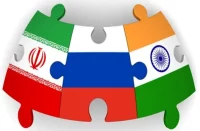
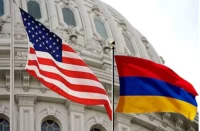

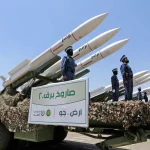
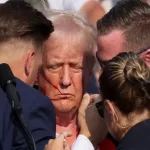
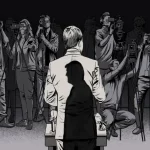







Comments